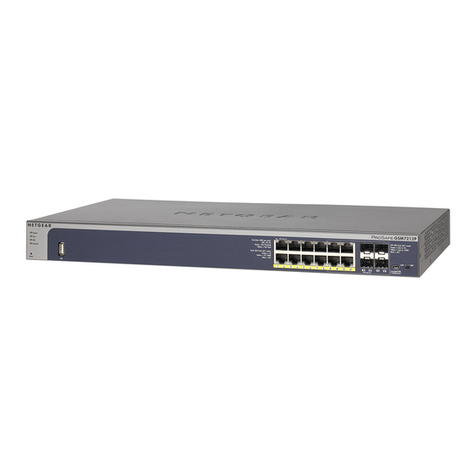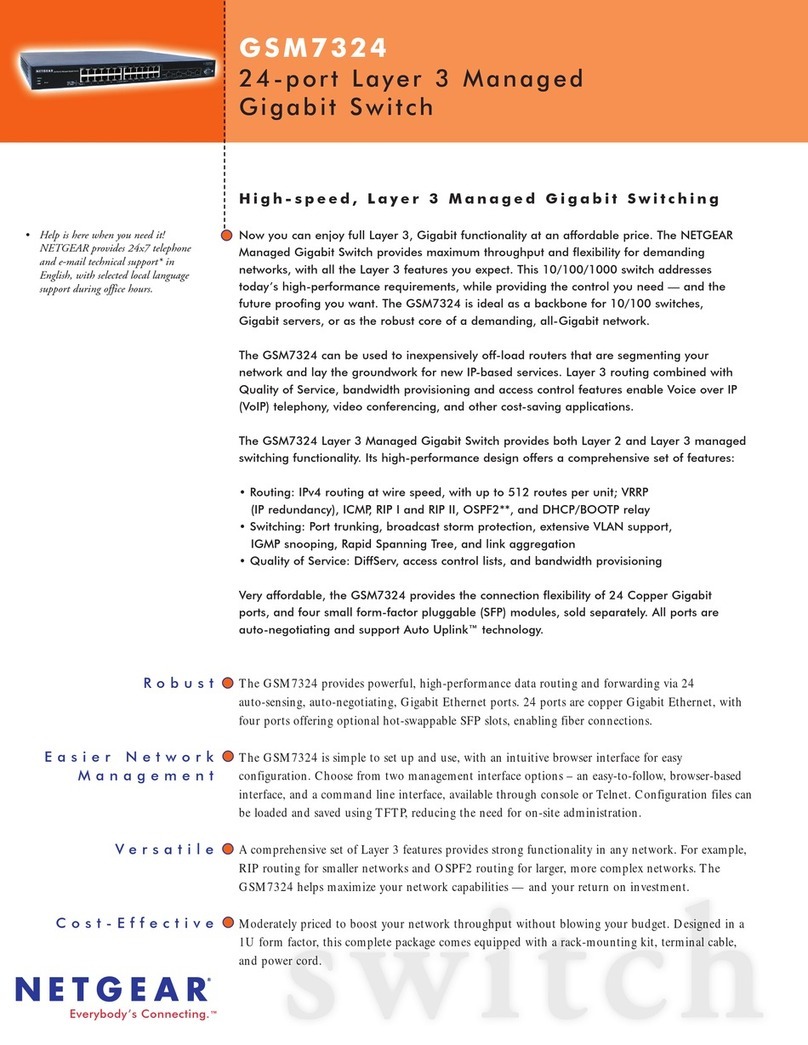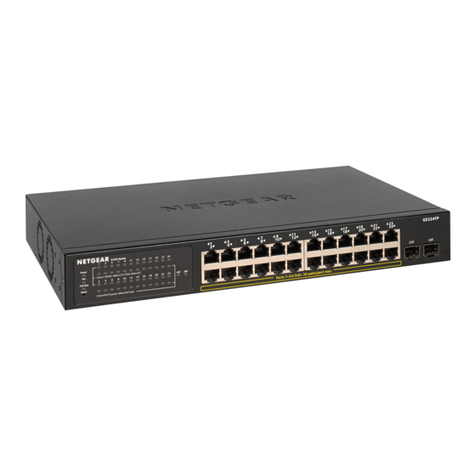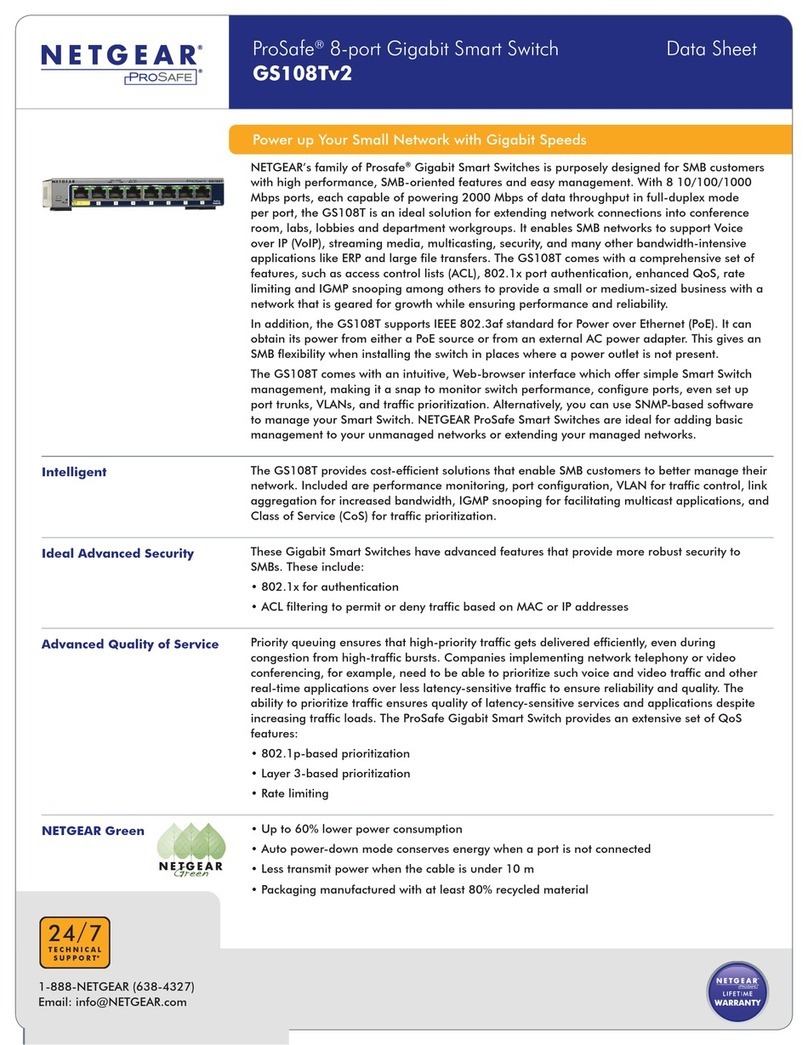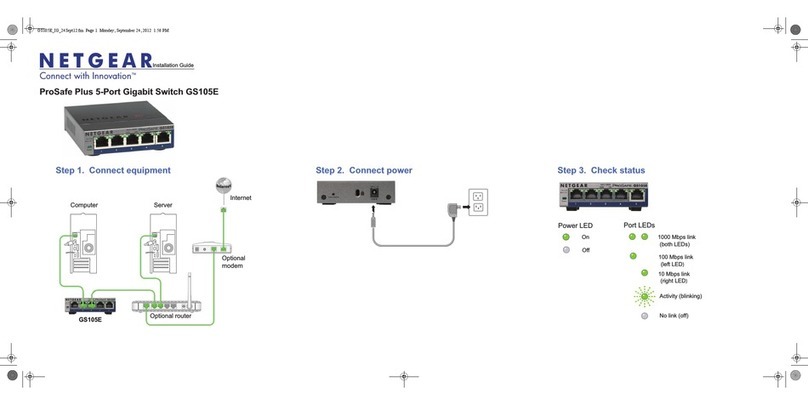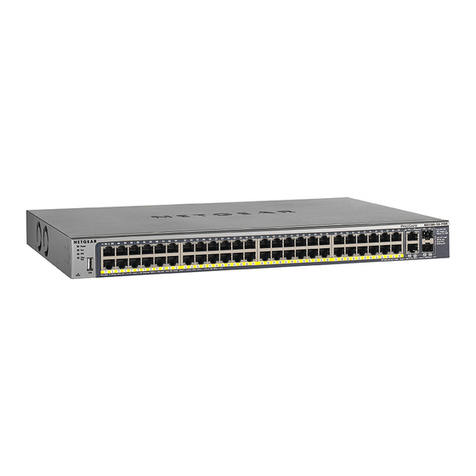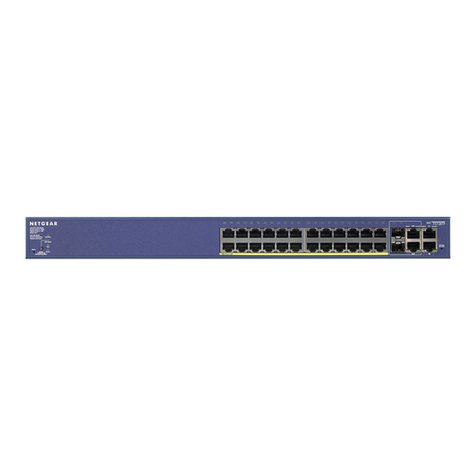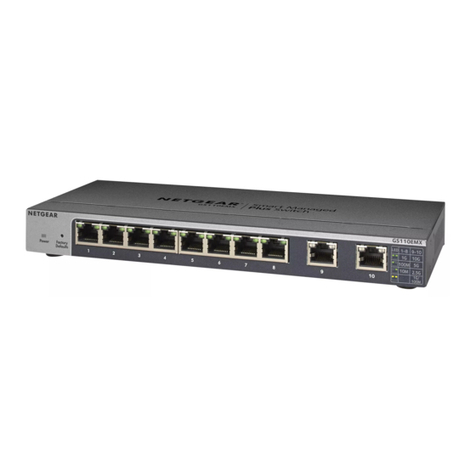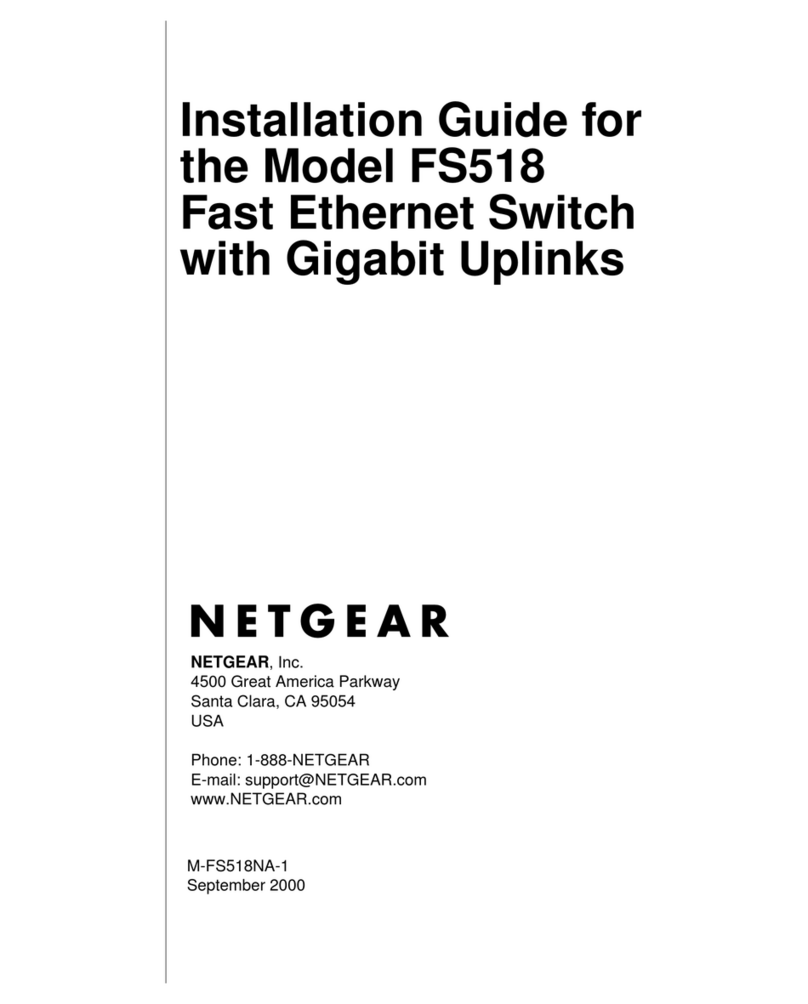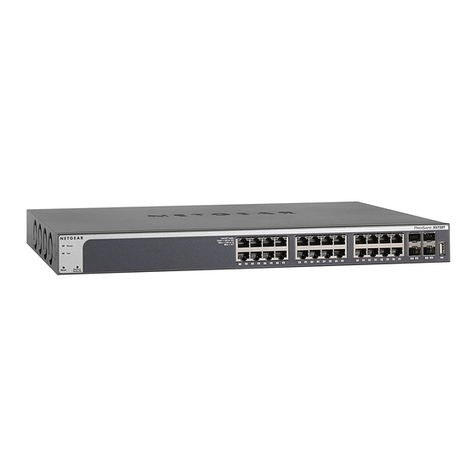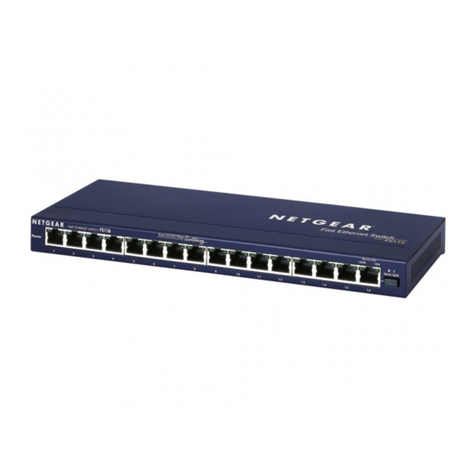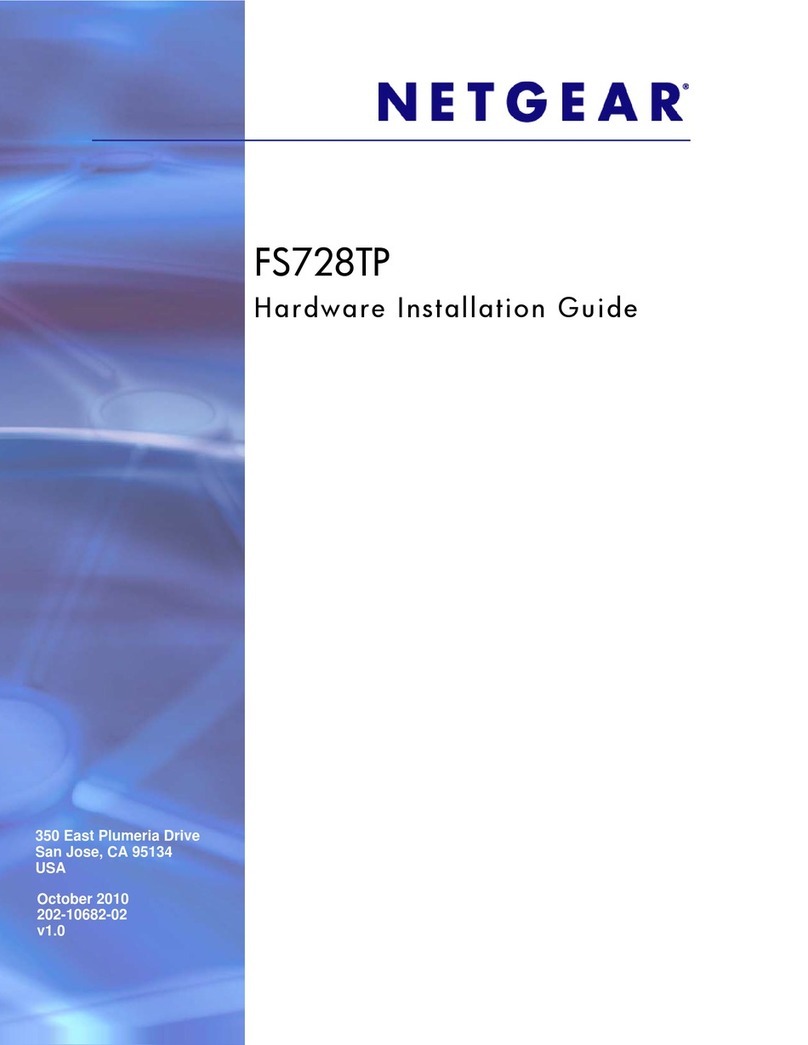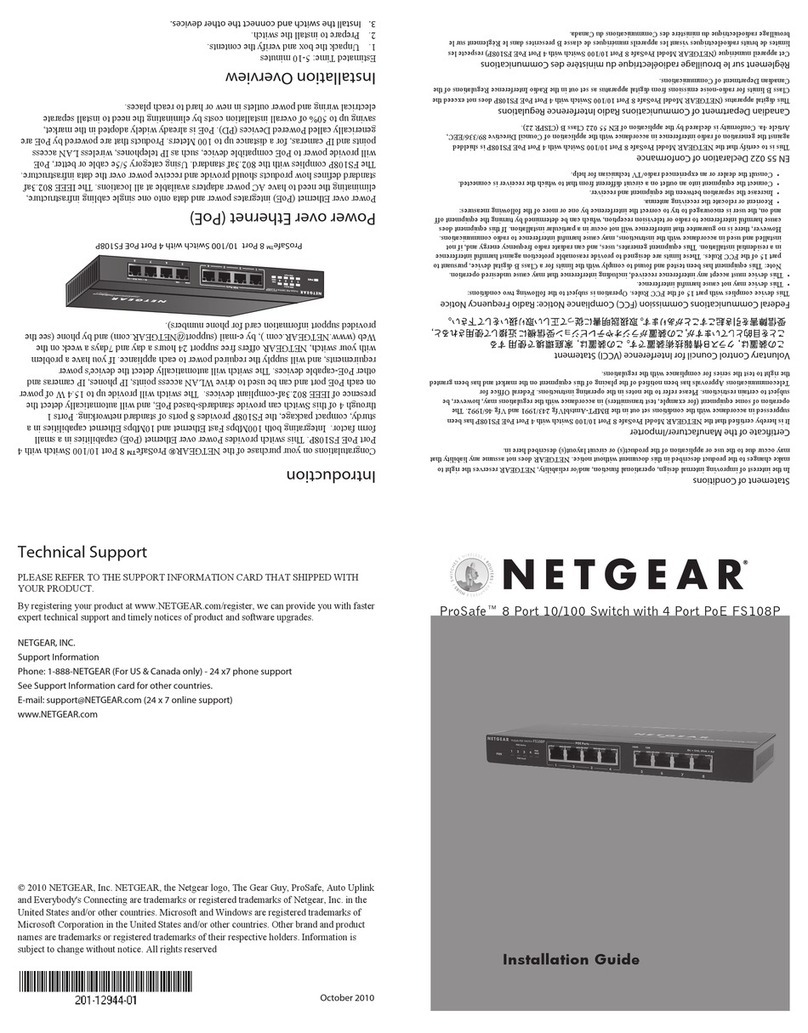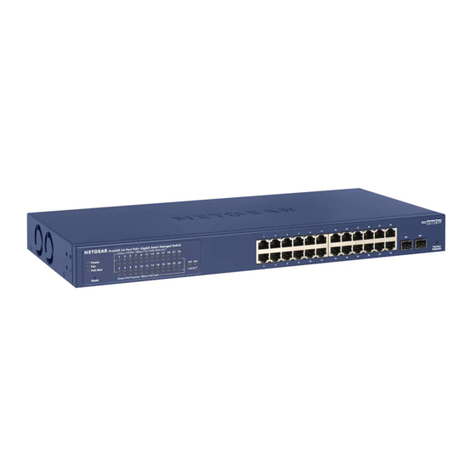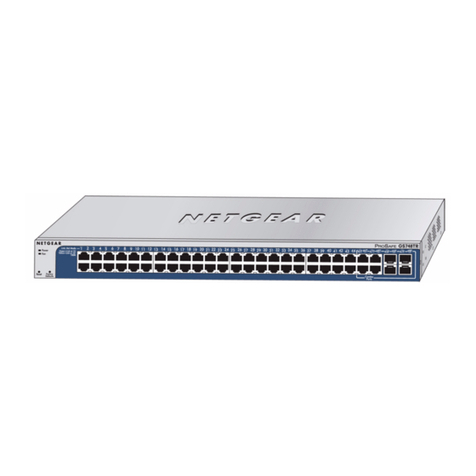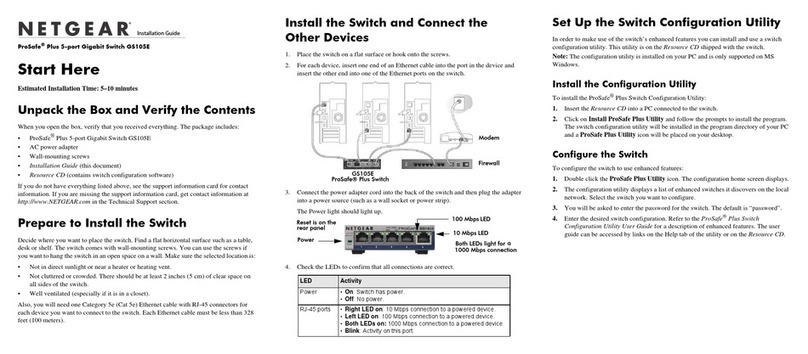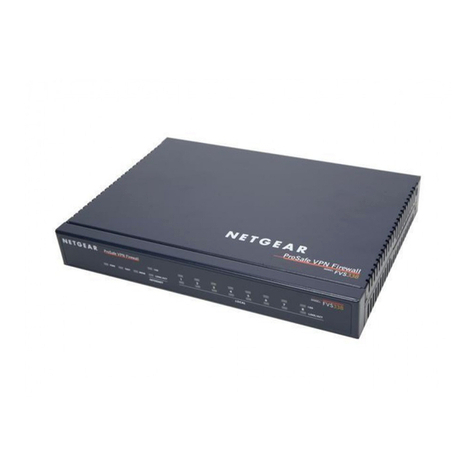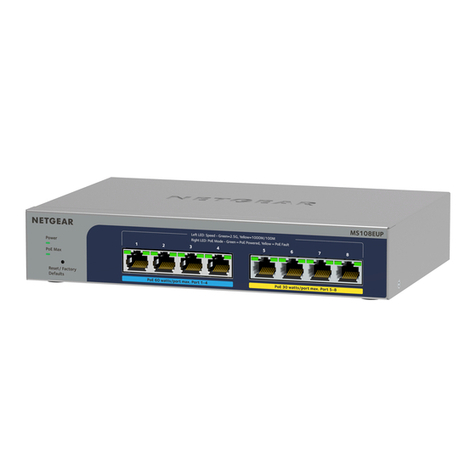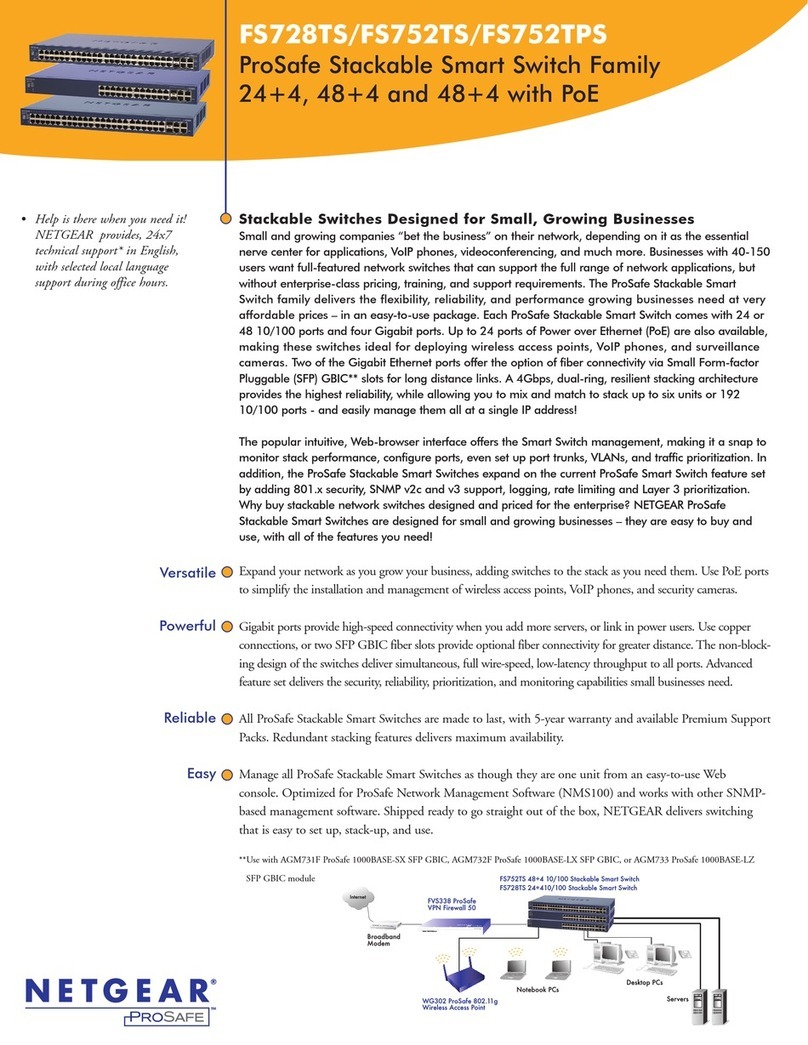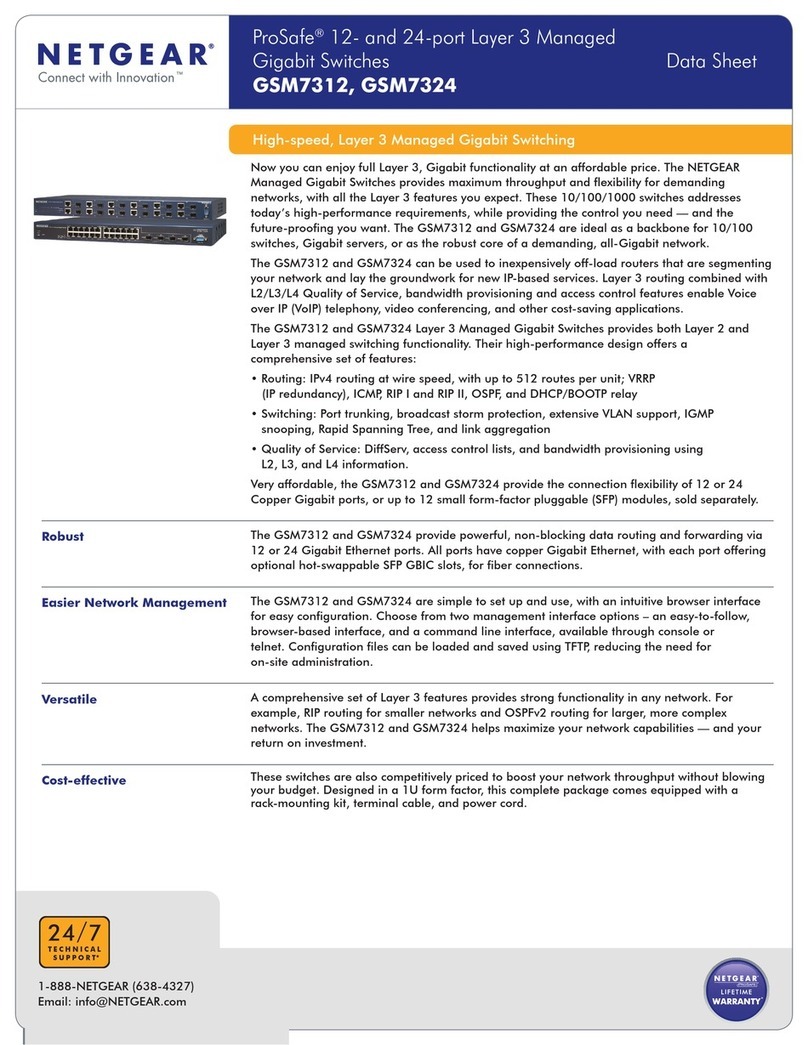
The History of Stackables
Historically,thestackableconcepthasbeenthepreferredmethodofmovingdatabetweendifferentnodesand
devices on larger networks (more than 20 users). First introduced in network hubs, the stacking solution proved
immediatelysuccessfulfor many reasons, particularly those offlexibilityand price.
With the advent of the network switch, the stackable concept became
popular once again. Unlike hubs, which are designed to share the
available bandwidth through port bandwidth degradation, a stackable
switch provides full bandwidth to each of the ports on the switch. For
example, a heavy-traffic hub with 16 10/100 ports might forward as
little as 6.25 Mbps per port, while a full-duplex switch can move close
to 200 Mbps of data on each port.
What is a Stackable Switch?
Stackable switches are single-configuration switches that can be stacked
and interconnected through proprietary ports. The concept of stacking,
however, is more than just physically placing one switch on top of
another or connecting some switches using a proprietary connection.
The essence of stacking starts with bandwidth. In a stacking
arrangement, the connection between any two switches must provide
future-proof bandwidth to prevent oversubscription as additional
switches are added. For this reason, stackable switches that have a
high-performance, high-availability uplink port can create a fat-pipe
connection between cascaded switches that boosts the backbone bandwidth,
eliminating backbone bottlenecks and network-looping issues.
A stackable solution should also free users from the yoke of having to
choose between performance and price. Unlike chassis-based solutions,
which require a significant initial investment of the physical chassis,
truly stackable solutions should allow users to buy only the number of
ports required at the time of purchase, with the ability to upgrade to
additional ports at a later date. (This advantage was one of the key
reasons contributing to the popularity of stackable network hubs.)
Additional benefits derived from a scalable stacking technology include:
•Seamless migration from 10 Mbps to 100 Mbps to 1000 Mbps (1 Gbps).
• Easy expansion to match an organization’s future networking
requirements. For example, you can readily expand network size (number
of nodes), and performance (bandwidth) in incremental steps, maintaining
interoperability throughout.
• The flexibility to redeploy network resources if and when the need
arises. Scalable stacking technology also makes it easy to add switches
to support more users, thereby providing greater bandwidth and
protecting against network downtime. In this way, small office can
respond to business changes while obtaining peak performance from
existing infrastructure.
The Challenges of Network Growth
In assessing your own need for scalable solutions, consider the
potential impact of the following industry-wide trends on your network.
